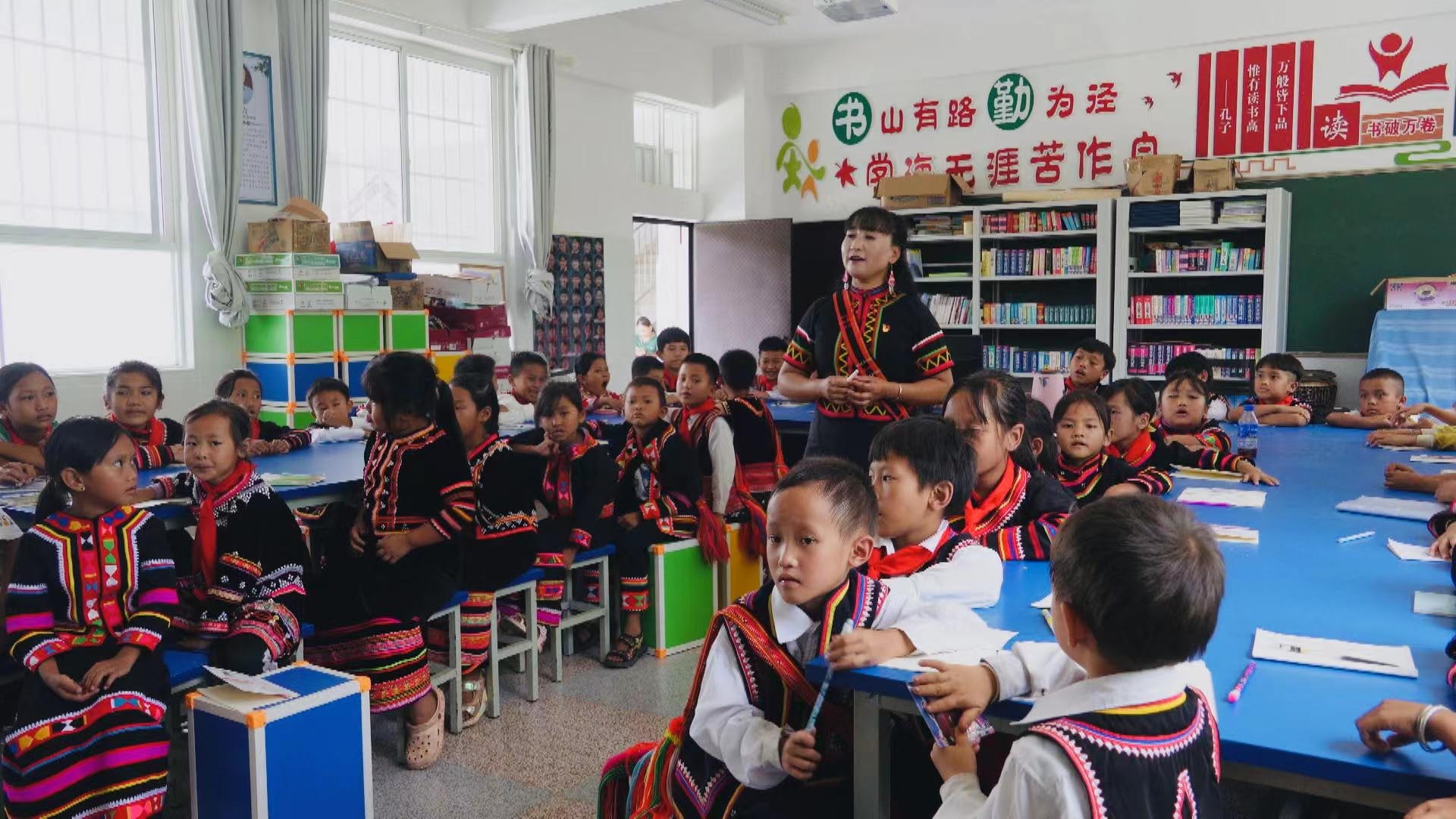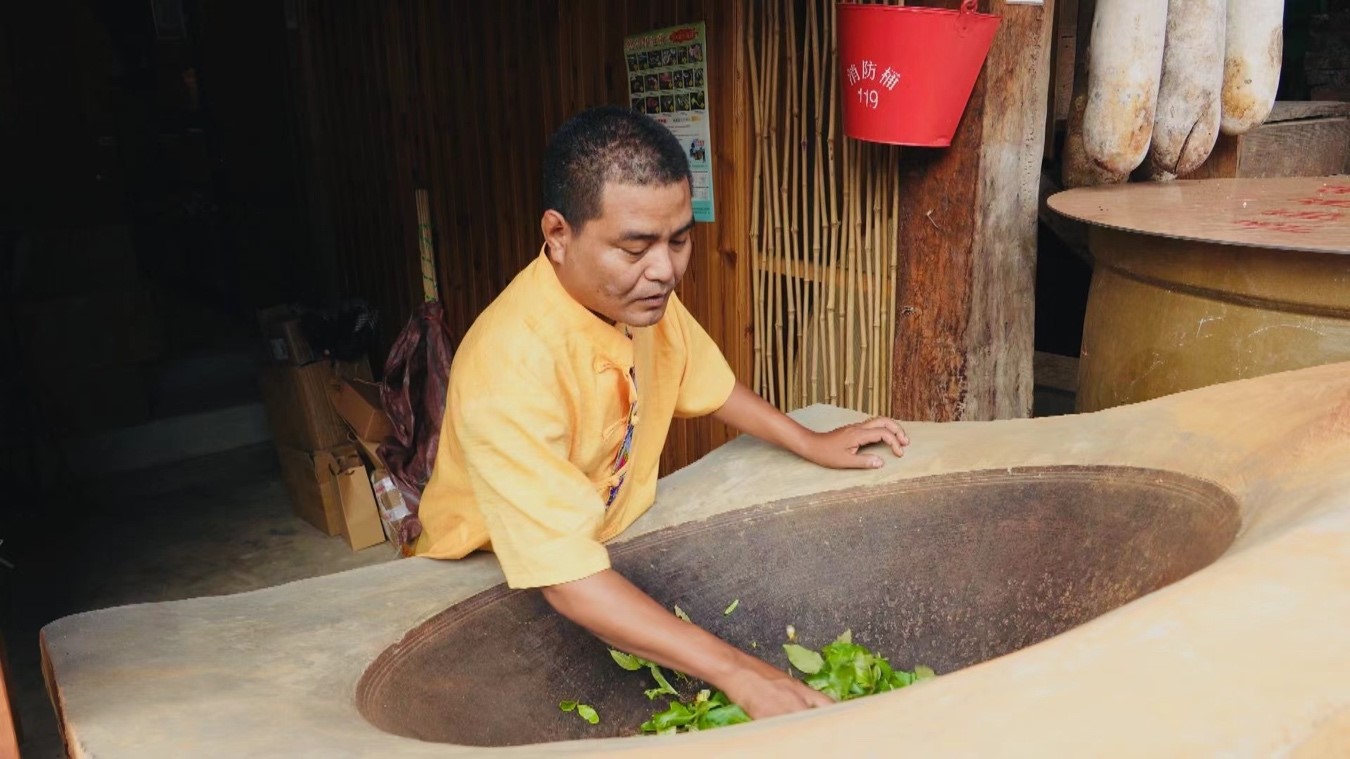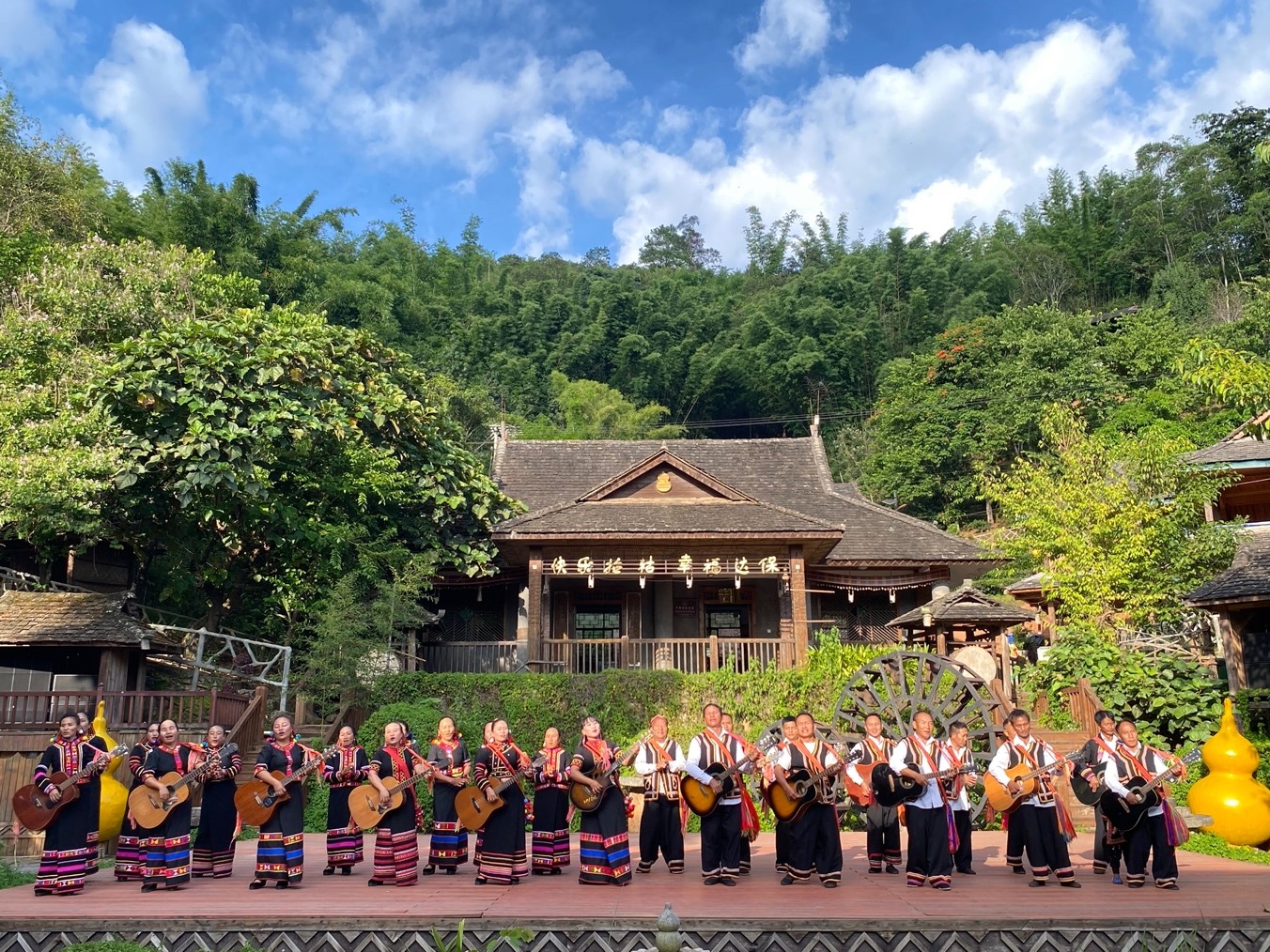03:11

Li Shikai spent a busy week during the National Day Holiday (October 1 to 7) to entertain visitors from across the country, cleaning guestrooms, cooking and performing.
The 59-year-old, from Lahu ethnic group in Lancang County, southwest China's Yunnan Province, runs a homestay and a restaurant. Meanwhile, he is a core member of a performing company in his village.
"We never thought that our ethnic songs and dance could attract visitors," Li told CGTN, noting that their income has multiplied through their performance with unique flavor.
The story of Li's hometown, Laodabao, is not isolated. During the past decade, many areas inhabited by ethnic minority groups, which were once isolated and under-privileged due to historic reasons, have witnessed a transformation from poverty to prosperity.

Li Shikai makes a bed at his homestay to greet visitors. Luo Caiwen/CGTN
Li Shikai makes a bed at his homestay to greet visitors. Luo Caiwen/CGTN
Improved infrastructure
Lahu people are one of the "directly-entering-socialism ethnic groups," which means that they had lived in a way of primitive society before the founding of the People's Republic of China.
As Li recalled, they lived a humble life even in the 1990s.
"Back then, we lived in thatched houses and didn't have enough food and clothing. There was only a dirt road, and it was not easy to go outside," he said. "We even needed a torch at night."
Today, though their houses remain almost unchanged in terms of the main structure, they are a lot better equipped. Old pictures show that in the past, people lived upstairs and livestock were kept downstairs.
Now, Li has six guestrooms at home, which are often fully booked, as people can drive to the village to enjoy the landscape and distinctive Lahu culture without any trouble.
Some 50 kilometers away is another well-preserved village inhabited by Blang people. Locals can feel how the improved infrastructure is changing their life.
Sitting on the Jingmai Mountain, a main production area of the high-quality Pu'er tea, the village of Wengji had long been isolated from the outside world.
"In the past, nobody came to buy our tea because of bad roads. Some villagers would carry some to the market, which was only sold for a few cents per kilogram. Today, businessmen and tea lovers swarm here for fresh tea leaves, which can be sold for as high as 200 yuan (about $28.1) per kilogram," San Wen, a local villager, told CGTN.
The 34-year-old now produces his own brand of tea at home. His products can be easily sold to clients nationwide, with express delivery services available at his doorstep.
Nujiang, a prefecture mainly inhabited by Lisu, Nu and Dulong ethnic groups, has also witnessed a similar trajectory. For decades, locals have relied on steel cables to cross the thundering Nujiang River. Today, the cables have all been replaced by grand bridges.

San Wen roasts fresh tea leaves at home. Yang Jinghao/CGTN
San Wen roasts fresh tea leaves at home. Yang Jinghao/CGTN
Characteristic industries
Following the elimination of extreme poverty, people's daily necessities are no longer a problem in these areas. What comes as the priority is to develop agricultural specialty industries for further vitalization.
Lancang County has seen much progress in this regard. Farmers here had long relied on traditional crops like corn and rice for a living. With the help of agricultural experts, they've successfully cultivated some specialty products, such as high-quality potatoes in winter and pseudo-ginseng, a kind of valuable herbal medicine, which have generated a handsome income.
Zhu Youyong, an academician at the Chinese Academy of Engineering (CAE), has been helping the county bordering Myanmar shake off poverty since 2015. He said that technological innovation is the key to drive rural development.
"But the exploration has to be conducted based on local natural conditions so as to turn natural advantages into economic profits. We can't simply copy the experience and technologies deemed successful in other places," Zhu told CGTN.
This year, Zhu led a team to pilot the cultivation of paddy rice in drylands in some villages, which has seen a bumper harvest. The innovative program is expected to further ensure food security among local farmers.
In Wengji, the tea industry has been upgraded, from simply providing fresh tea leaves to selling fine tea products as well. The trendy sales way through live streaming is also stimulating the growth of the industry.
Notably, what's being done in Laodabao village has been applauded. Before the performing company was established there in 2013, the villagers just sang and danced for self-entertainment, and never thought it can be a way of making money.
Now the company has over 200 members, all villagers, including those in their 80s. On average, each member can earn at least some 10,000 yuan ($1,405).
"In this way, our ethnic culture can also be passed down from generation to generation," said Li Naluo, vice president of the company.

Villagers of Laodabao in Lancang County perform to visitors. Yang Jinghao/CGTN
Villagers of Laodabao in Lancang County perform to visitors. Yang Jinghao/CGTN
Accessible educational resources
During China's poverty alleviation campaign, the importance of education has been underlined. Today, all children in these areas can enjoy the nine-year compulsory education free of charge.
San Wen of the Blang ethnic group still feels sorry for himself when talking about this. Like many of his peers, he didn't finish elementary school. Before returning home for tea business, he did some labor-intensive work for a living.
"Now I am able to send my kids to schools in urban areas. I never thought of that before," he said.
When he was young, he could only speak their Blang language. Today, his children speak Mandarin Chinese fluently and even have access to English learning.
Besides basic education, local governments also attach great importance to vocational education. In Lancang, a new vocational school has been set up in collaboration with a Shanghai counterpart.
Local government officials told CGTN that some CAE academicians will continue to provide support in terms of educational resources to the school. And what makes it special is that the school will provide special training of related agricultural techniques to local farmers.
People have also commonly realized that education is the key to the sustainable development of their hometown.
"If the younger generation can inherit our traditional tea making craftsmanship, with modern knowledge they learn, I believe they will do a lot better than us, in terms of both packaging and marketing," said San Wen.
(Cover photo: Students in Laodabao Village attend a class given in Lahu language. Luo Caiwen/CGTN)